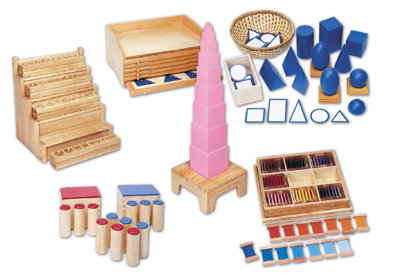Materials, which are one of the most important elements of Montessori classrooms, are natural, real, harmonious and attractive. These features increase the children’s desire to study and they want to do more attractive and beautiful things. It also increases the concentration of beauty.
Montessori materials are placed in the classroom from left to right, from concrete to abstract, from simple to complex, on the shelves that children can reach according to their daily life, sense, mathematics, language and cosmic fields.
-The materials are presented to the children in a special way by the guide. Shows the process of removing material from the rack and back to the rack.
-After presenting the guide material, the child can work on his own or in small spontaneously formed groups until he or she has mastered the material. Having successfully completed the material and specialized, the child can develop the material by generating new ideas.
-Children have the freedom to choose and study the material they want from the materials presented to them.
-Once the child has studied and mastered one material sufficiently, they can move on to another higher-level material.
-Each material teaches a single concept. Thanks to the isolation of the difficulty, children do not have ambiguity and learn better by concentrating on a single concept.
-There is one of each material in the classroom. While every child has the freedom to choose the material they want, they have to wait for their friend to finish their work in order to work with a material.
-Each material has an error check. This error control allows the child to evaluate his own learning and to work independently and self-control without the need for the approval of any adult.
Daily living skills materials; These are the studies that the child meets for the first time with Montessori education. Daily living skills materials provide a comfortable transition for the child between home and school. Materials in this area are tools that the child always comes across at home.
Sensory education materials; it works by influencing the child’s senses and strengthens and refines the detail scale of sense perception. Our five sense organs are our windows to the world. The more textures, images, tastes, sounds and smells the human brain is exposed to in the first years of its life, the more developed it will be.
Mathematics materials; It seems to prove the graceful genius of Maria Montessori. The materials are simple and easily understandable. A child learns mathematics not with the prejudice that it is difficult, but as a kind of game, an enjoyable job. The child, whose first experiences are pleasurable, no longer has reason to fear mathematics.
grammar materials; teaches children new concepts and new words in a natural process. It expands vocabulary and strengthens language dominance.
Cosmic educational materials; presents the perfect formation and details of the world to children. Because relating to facts arouses interest and inspires children. For this, it is sufficient to investigate the realities of the details, and the child can create the whole concept only through imagination.
